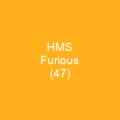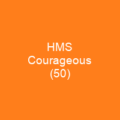The Courageous Class: A Tale of Speed and Transformation
Imagine a fleet of ships designed to be the fastest in their era, built with the sole purpose of supporting a daring naval project. The Courageous class, three battlecruisers for the Royal Navy during World War I, were like the Weird Sisters from Shakespeare’s Macbeth—each with its own unique story and destiny.
The Design of Speed
Admiral Fisher, the First Sea Lord, had a vision. He believed that speed was paramount in naval warfare, stating, ‘There must be further VERY GREAT INCREASE IN SPEED.’ The Courageous-class ships were built to exceed 32 knots, making them faster than their potential enemies. Their shallow draught and geared steam turbines allowed for swift maneuverability, much like a cat leaping over obstacles.
Armament and Protection
The ships mounted four 15-inch guns in two turrets, with 18 4-inch guns and anti-aircraft guns. Their protection was light but strategic—3 inches of armor and anti-torpedo bulges. The main belt was made from high-tensile steel, while the turrets and conning tower were protected by Krupp cemented armor. Yet, even with these defenses, they faced challenges during sea trials, sustaining damage at full speed in rough seas.
From Battlecruisers to Aircraft Carriers
The post-war era saw a transformation for the Courageous-class ships. Furious was modified into an aircraft carrier, with a flying-off deck and hangar. The other two were rebuilt as carriers in the 1920s, marking a shift from traditional naval combat to air power dominance.
Service and Legacy
Courageous and Glorious served during World War I, initially patrolling the North Sea before being reconstituted into the 1st Cruiser Squadron. Furious played a crucial role in anti-Zeppelin patrols and later supported British forces in various campaigns. By the end of World War II, all three ships had seen extensive service, with Courageous lost to German U-boats and Glorious sunk by German battleships during the Norwegian Campaign.
After the war, Furious continued its service as an aircraft carrier until being decommissioned and sold for scrap in 1948. Each ship’s journey from battlecruiser to aircraft carrier reflects the evolving nature of naval warfare and the strategic importance of speed and adaptability.

The Courageous class, like a ship in a storm, faced challenges but also achieved remarkable transformations. Their legacy lives on as symbols of naval innovation and the relentless pursuit of speed and adaptability in the face of changing warfare.
You want to know more about Courageous-class battlecruiser?
This page is based on the article Courageous-class battlecruiser published in Wikipedia (retrieved on November 29, 2024) and was automatically summarized using artificial intelligence.







